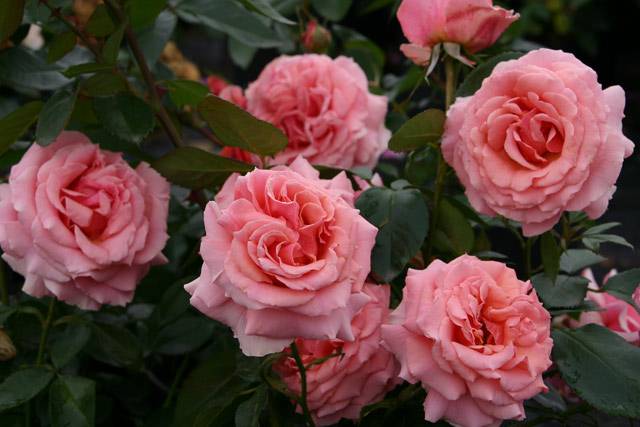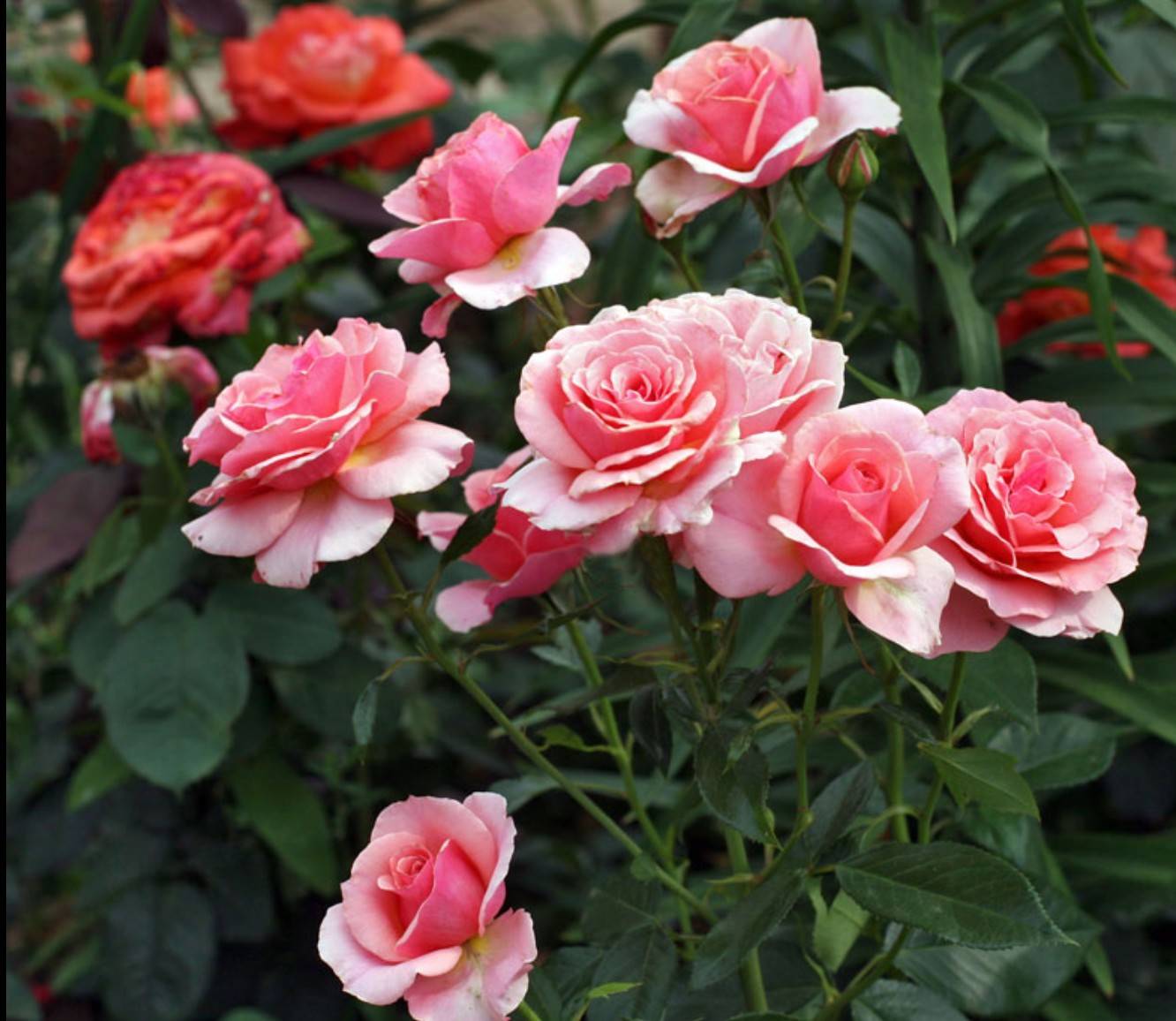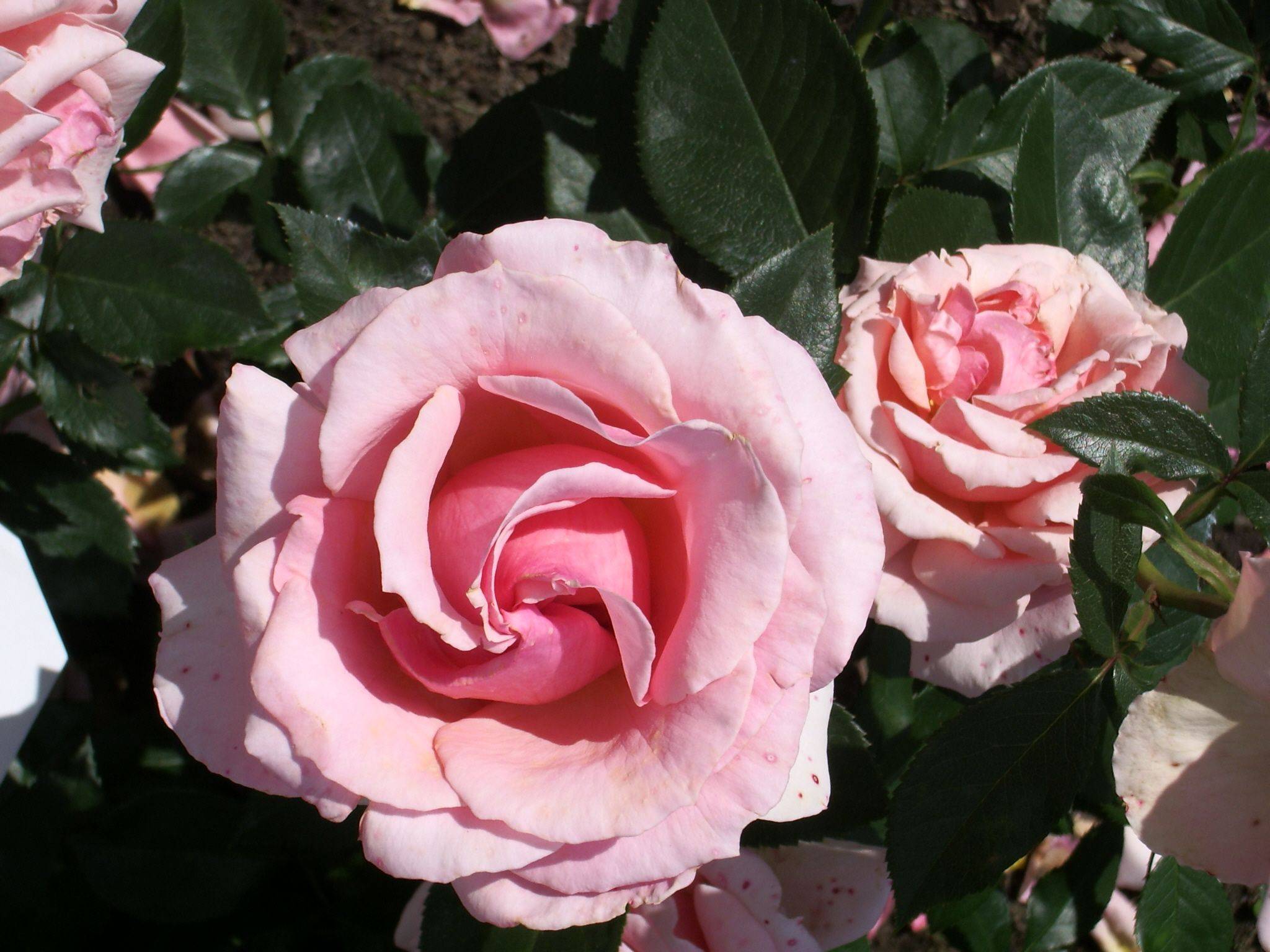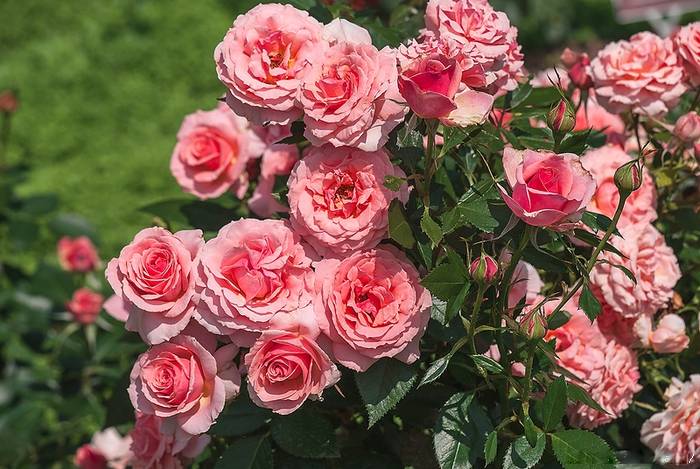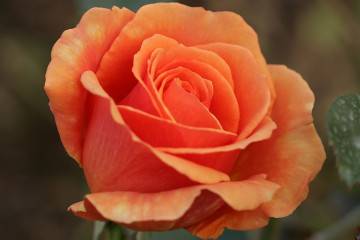Rose Poetry (Poesie) - features of bush culture
Content:
Florists love to grow more and more unusual varieties on their plots. One of these is the Rose Poetry. It attracts with its long flowering and beautiful appearance.
Rose Poetry (Poesie, Poetry, Tournament of Roses, Berkeley, JACient) - what is this variety, history of creation
Poesie rose has a wide branching bush up to 60 cm wide and 60 to 120 cm high. The foliage is tough and shiny, with a rich green color. The buds are warm pink with a darker center, large and densely double, located on the stems of 1-3 pieces. The size of the flower is 7-8 cm. It does not bloom quickly, but pleases the owners with long flowering.
Poetry exudes a pleasant aroma reminiscent of cocoa with milk.
Advantages and disadvantages of the variety
Rose floribunda Poetry has the advantages inherent in the varieties of this group:
- charming appearance;
- long flowering time;
- disease resistance;
- versatility in the landscape.
The disadvantages of this rose variety can be considered:
- the need to shelter a bush for wintering;
- not as lush as some other floribunda varieties.
Use in landscape design
Rose Poetry is grown both outdoors and indoors. It is suitable for the formation of hedges. It can grow both as a single bush and in a group with other varieties. Poetry also looks good in flowerpots near houses and terraces.
Growing a flower in the open field
The Poetry rose variety has almost no cultivation characteristics of its own. It is enough to follow the basic rules of agricultural technology and plant a healthy seedling free from diseases and pests.
For planting, one-year or two-year seedlings are chosen. You can buy them in garden centers or flower markets.
Poesi's rose can be planted in spring and autumn. Planting in spring gives the roots the opportunity to gain more ground in the ground and devote all their strength to the growth of shoots. Buying and planting in fall allows you to see the flowering buds of the shrub next summer
Location selection
For this variety, it is important that the place is well lit, but does not receive an excessive amount of direct sunlight. It is also necessary to protect the seedling from drafts. A strong rise or lowland for the Poetry rose will be unfavorable due to a lack or excess of groundwater.
How to prepare the soil and flower for planting
The soil should not be too heavy. If there is a lot of clay in it, then you should add garden soil, sand or compost. The stems and roots of the rose must be pruned before planting. And for greater survival, you can place the root part of the seedling in a special saline solution for 10-12 hours.
Description of the landing procedure
The step-by-step procedure for planting a rose Poetry looks like this:
- Preparing a fossa with a depth of about 60 cm.
- Laying drainage from sand or expanded clay to the bottom.
- A small layer of fertile soil, pre-fertilized with minerals, is poured onto the drainage.
- The seedling is installed in the hole, its root system is carefully straightened.
- The hole is covered with soil in such a way that the root collar is recessed by 3-4 cm.
- The seedling is watered abundantly with warm water.
Plant care
How the rose bush is taken care of depends on its overall appearance and the duration of flowering.
Watering rules and humidity
The Poesie rose should be watered sparingly, but generously. One young bush should have at least a bucket of water with a volume of 10 liters, overgrown bushes need 1.5-2 times more moisture. Watering is necessarily carried out at the root, sprinkling is not suitable for this rose.
Top dressing and soil quality
Rosa Poesi does not like acidic soils, therefore, in spring, summer and autumn, it is fed with nitrogen. The first such top dressing is done when the temperature on the street is set within 10 ° C. For a more lush growth of buds, before and after flowering, a complex mineral dressing is carried out.
Before a dormant period, it is recommended to apply potassium-phosphorus fertilizers to the soil.
Pruning and replanting
Pruning a rose bush is carried out for more lush growth and flowering at least twice a year. Before applying the pruning shears, it is disinfected to avoid contamination of the exposed branches.
Floribunda Poetry transplant is carried out in spring or autumn. It will be the least sensitive for bushes 1-2 years old.
Features of wintering a flower
In order for the plant to successfully endure the winter, it is necessary to prune the branches, remove the remaining buds. The stem of the rose must be spud 30 cm with compost or soil. The shrub will feel especially good if the roots are covered with spruce branches. Before freezing Poetry is covered with polyethylene or foam form.
Blooming rose
Rose Poetry blooms almost the entire season, taking small breaks.
That is why it becomes a real decoration of sites.
A period of activity and rest
Poetry begins to bloom in spring. The buds open gradually, so the shrub is blooming for a long time. To prolong this period, each bud that dries up should be cut off. Then new shoots will soon appear in this place. They may not fade until the very frost.
Care during and after flowering
During flowering, the rose bush is not only watered, but also monitored by the soil: it is loosened and mulched. It is also necessary to remove all weeds in time so as not to provoke diseases.
After the completion of the flowering process, Poetry is fed with special mineral compounds, the basis of which is phosphorus and potassium.
What to do if the rose does not bloom
Sometimes the rose may not give color. The reason may be:
- improperly chosen landing site (drafts, too much direct sunlight);
- frequent feeding (it provokes the active growth of greenery, and there is no longer any energy left for the buds);
- too weak root system (in the year of planting Poetry will not give buds, first the bush must take root in the ground);
- the soil is not suitable for shrubs (dense, clayey soil will inhibit flowering);
- improper watering regime (watering occurs more often than once a week, the earth does not have time to dry out, the roots lack oxygen).
Flower propagation
You can get new bushes of the Poetry rose by cuttings, layering, grafting or dividing the bush.
Cuttings can be carried out from spring to autumn.But the earlier reproduction starts, the more time the rose will have to take root before the dormant period.
Cutting is carried out in the following order:
- Cuttings are cut with a length of 10-15 cm.
- The leaves are cut from the bottom, the upper ones are cut in half.
- The lower part of the cutting should be temporarily placed in a solution - a growth stimulator.
- Boxes with a loose substrate are being prepared.
- Cuttings are placed vertically in them.
- Watered abundantly, mulched. The boxes are closed on top with foil.
When the roots appear, the seedlings are transplanted into separate containers. The next year, they can be planted in open ground.
Diseases, pests and ways to control them
Like the rest of the Grandiflora and Floribunda varieties, Poetry is vulnerable to powdery mildew, root rot, and black spot. To avoid this, you must:
- remove foliage from the root circle in time;
- periodically thin out the plantings;
- use fungicides;
- use only settled warm water for irrigation;
- watering is rare, but abundant.
Rose Poetry can infect aphids or spider mites. To combat them, it is recommended to use insecticides.
Poetry is a rose variety that captivates with its appearance. Thick and dense pale pink buds can decorate any area. And proper care will allow you to enjoy its flowering all season until the frost.
